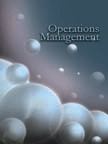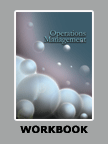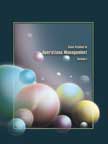Unilever Restructures its Supply Management Practices




|
|
ICMR HOME | Case Studies Collection
Case Details:
Case Code : OPER027
Case Length : 15 Pages
Period : 2001 - 2003
Organization : Unilever
Pub Date : 2004
Teaching Note :Not Available
Countries : USA
Retail
To download Unilever Restructures its Supply Management Practices case study
(Case Code: OPER027) click on the button below, and select the case from the list of available cases:

Price:
For delivery in electronic format: Rs. 400;
For delivery through courier (within India): Rs. 400 + Rs. 25 for Shipping & Handling Charges
» Operations Case Studies
» Case Studies Collection
» ICMR HOME
» View Detailed Pricing Info
» How To Order This Case
» Business Case Studies
» Case Studies by Area
» Case Studies by Industry
» Case Studies by Company
Please note:
This case study was compiled from published sources, and is intended to be used as a basis for class discussion. It is not intended to illustrate either effective or ineffective handling of a management situation. Nor is it a primary information source.
|
|
<< Previous
Background Note
|
Unilever (called the Unilever Group) functioned as the operational arm of
Unilever NV (Netherlands), and Unilever Plc., (UK), its two parent companies.
Though these companies (Unilever NV and Unilever Plc), operated as separate
legal entities (with separate stock exchange listings), they operated as a
single business, with a single set of financials and a common board of
directors.
Unilever was formed in 1930 as a result of the merger of a Dutch margarine
company, Margarine Unie, and a British soap company, Lever Brothers. Margarine
Unie had been formed by merging many margarine companies during the 1920s and
was a leading global player in the business.
|
|
Lever Brothers was a name worth reckoning with in the worldwide soap market and
had factories all over the world. It had diversified into many other
businesses (primarily related to foods). At the time of the merger, the two
companies, together, had operations in over 40 countries.
|
|
During the
1960s and 1970s, Unilever rapidly expanded its operations through
vertical and horizontal integration, emerging as a diversified
conglomerate by the early 1980s. Diversification into different
businesses was prompted in one way or the other by the existing business
lines.
For instance, oil seeds crushed for use in the margarine and soap
businesses yielded a by-product called 'cattle cake,' which led the
company into the animal feeds business. Likewise, by-products such as
glycerine and fatty acids, formed from processing oil for use in
margarine and soap production, prompted the entry in the chemicals
business. |
The company operated twenty-four packaging plants (for its
consumer products) in six European countries, from where goods were distributed
worldwide. This activity made it one of the largest truckers in Britain and one
of the largest shipping company owners in the world.
In the 1980s, Unilever decided to have a more focused approach towards business,
which it referred to as the 'core strategy.' As part of this, the company
decided to focus on the following four industries - Foods, Personal Care, Home
Care and Specialty Chemicals.
The decision to focus on these industries involved acquisition and divestiture
of brands and companies as well. In 1984, Unilever acquired Brooke Bond, a
leading tea brand, to strengthen its presence in Europe's tea market. In 1985,
the company sold Palm Line, its shipping company and in 1987, it acquired
Chesebrough-Pond's Inc. to establish itself strongly in the US personal products
market and to strengthen its position in the world skin care market...
Excerpts >>
|
|



